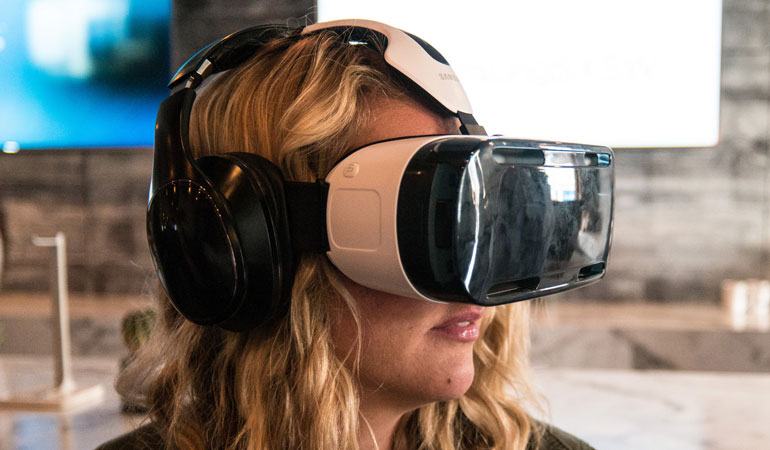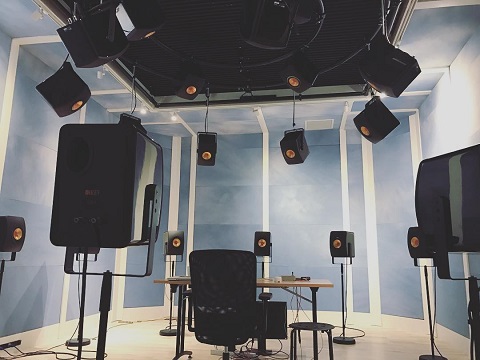 |
||||
 For information about spcmic, click here to go to spcmic.com
For information about spcmic, click here to go to spcmic.com
Harpex is a signal processing algorithm designed to extract the maximum amount of spatial information from sound field recordings. With the Harpex plug-ins, content creators use this technology to transform sound field recordings in A-format, B-format or AmbiX into the standard surround and 3D surround formats used in film and television, coincident, non-coincident and binaural stereo, or higher-order AmbiX for VR and AR applications.












Unlike traditional ambisonic decoders, Harpex is an active matrix processor for sound field recordings. This allows Harpex to do some unique things.
Harpex can produce surround decodings with far greater channel separation than what is possible with passive matrixing, which in turn leads to a much larger sweet spot, allowing sound field recordings to be used in large venues like movie theaters, even supporting modern 3D surround formats like Dolby Atmos, IMAX and Auro 3D. Another advantage of the higher channel separation is the virtual elimination of phasing - an unpleasant sound coloration that changes as listeners move inside the listening space.
In addition to total freedom in choosing between any coincident stereo recording technique in the comfort of your post production studio, Harpex can generate direction-dependent delays like near-coincident microphones do. Audio engineers will debate about the warm openness of near-coincident microphone recordings versus the spatial precision of coincident microphone recordings. With Harpex, you can switch back and forth between the two, all with a single sound field recording as the source.
With its binaural decoding mode, Harpex is able to produce headphone-adapted stereo similar to artificial head recordings. In virtual reality applications, where the sound field needs to be rotated to match the user's head orientation, the standard audio format is AmbiX. Harpex is able to produce up to 3rd order AmbiX output from sound field recordings.
If you need to isolate a single sound source, or split a recording into single-instrument tracks, the shotgun mode allows you to do this in post production. Combined with the sound field display, it is easy to point and click on the sound sources you want to isolate.
The plug-ins are available in VST, AAX and AU format for 32- and 64-bit Windows and Mac OS X. They support all major DAWs with surround sound capabilities, i.e. Reaper, Nuendo, Pyramix, Logic, Pro Tools HD etc.
A 30 day free trial is available. A permanent license for the plug-ins allows you to install them on two computers at the same time. No dongle or internet access is required, and you can transfer the license to a new computer every year. If you need to move the plugin more often than that, you can allow the plugin to authenticate over the internet. It can then be transferred every day.
The Harpex-X plug-in supports input in AmbiX, which is emerging as the standard ambisonic exchange format, B-format, which is the format used by older Soundfield microphones, and double MS. Additionally, it supports the direct input from the most popular models of tetrahedral microphone arrays. The currently supported models are the Sennheiser Ambeo, SoundField SPS-200 / NT-SF1, Core Sound TetraMic and Zoom H3-VR. It can produce a number of output formats, including first- and higher-order AmbiX.
The double M/S mode has been updated to conform with Shoeps specifications. More details in the documentation.
The Zoom H3-VR has built-in A-to-B conversion. Depending on your workflow, you might choose to use that (i.e. select FuMa or AmbiX output from the H3-VR and the same input in Harpex-X). However, many consider it best practice to keep recordings in a format as close to the source format as possible, to benefit from current and future improvements in signal processing. To that end, Harpex-X now also provides an "H3-VR" mode, supporting the Zoom H3-VR in "Ambisonics A" mode.
The THX 10.0 preset was previously a mixture between the THX 10.2 and 12.2 layouts. This has been corrected and a new THX 12.0 preset added.
The plugin parameters for input mode and speakerdome preset have changed. So if you have existing projects, please verify that the input mode is set correctly after updating the plugin. The same applies to the speakerdome preset if you use the speakerdome mode.
Since we introduced A-format support in the previous release, several users have noted that the channel separation in some decoding modes was lower when using the built-in A-format processing than when using an external A-to-B converter. This problem has been fixed in this release, and as a bonus, a couple of the output modes benefited from the update to provide even sharper and clearer decoding also when used with B-format input.
The plugin parameters have not been changed, so user-defined presets and automation for version 1.4 build 150 will work correctly with the new one.
The plugin now supports a growing list of input formats in addition to B-format input. The name has been changed from Harpex-B to Harpex-X to reflect this. The upgrade is free to holders of a permanent Harpex-B license.
Since HRTF sets can now be loaded from SOFA files, we have reduced the number of built-in HRTF sets and replaced them with higher resolution sets from the SADIE project at the University of York. The artificial head Neumann KU100 is now the default. The Kemar transfer functions from MIT have been replaced with a higher-resolution measurement of the same artificial head, provided by the SADIE project. The Listen 1053 set, which was the previous default, has been retained.
In addition, there are also a number of bug fixes and minor improvements.
Please note that the plugin parameters have been changed, so user-defined presets and automation for older versions of the plugin will have to be recreated in order to work correctly with the new one.